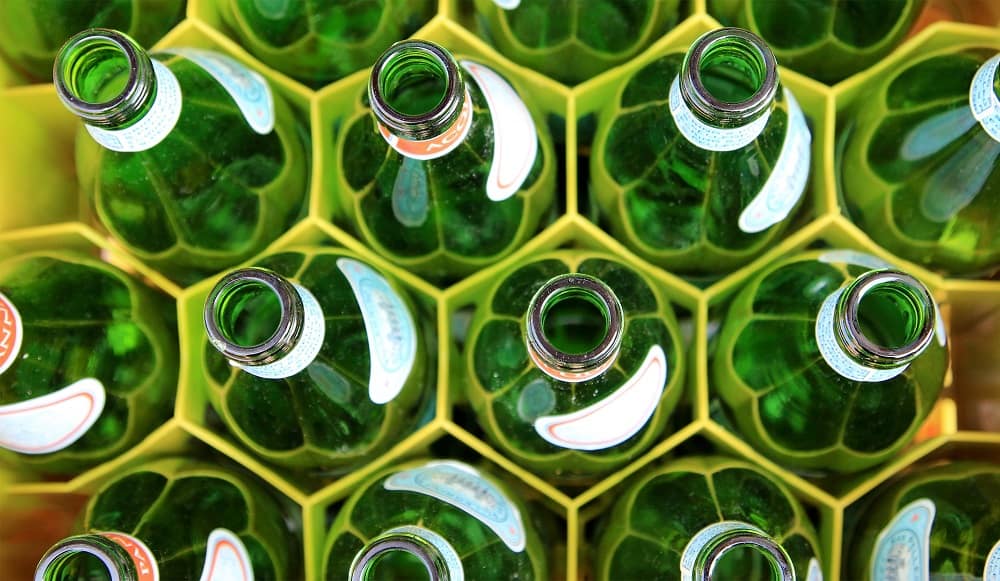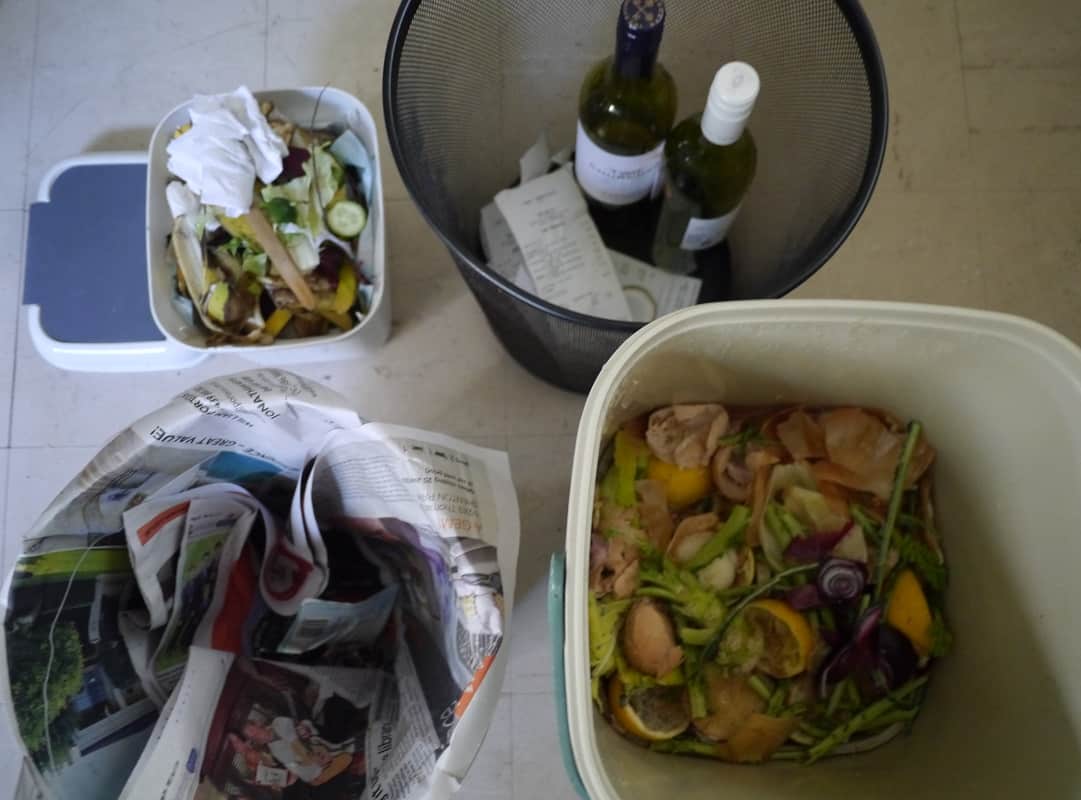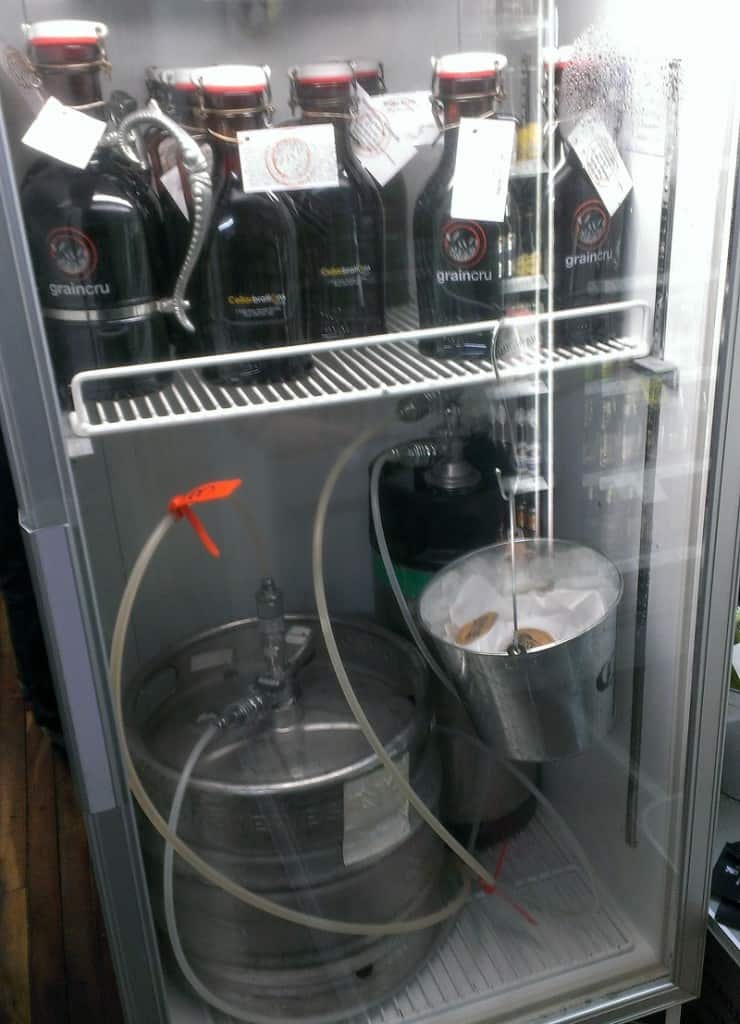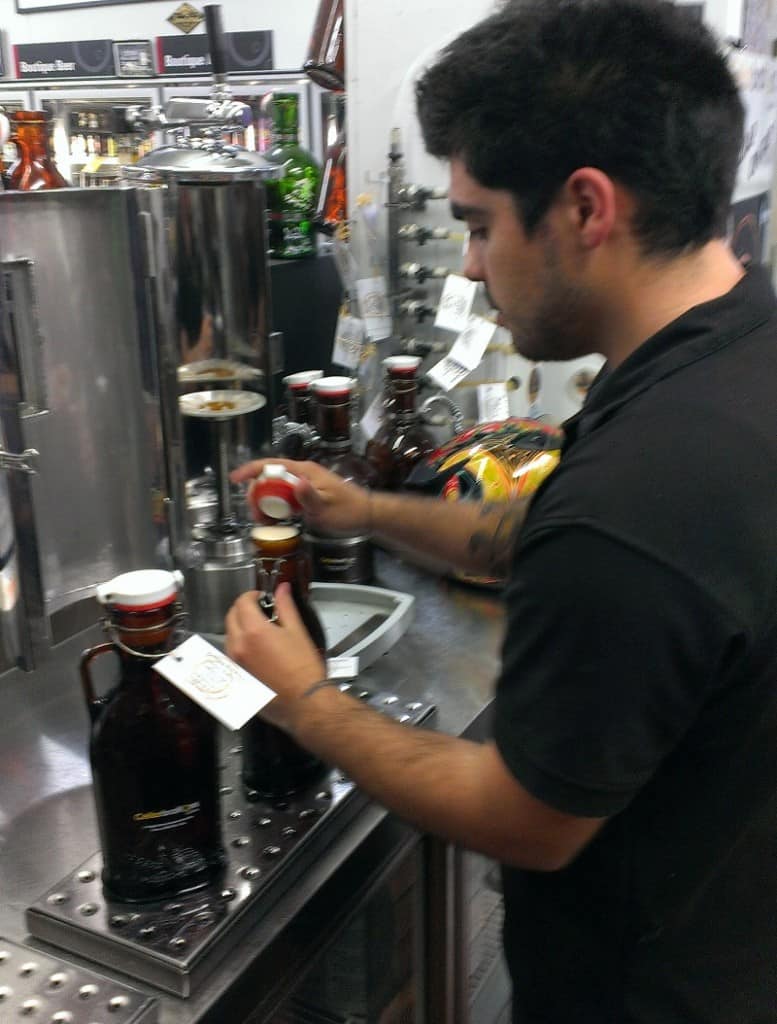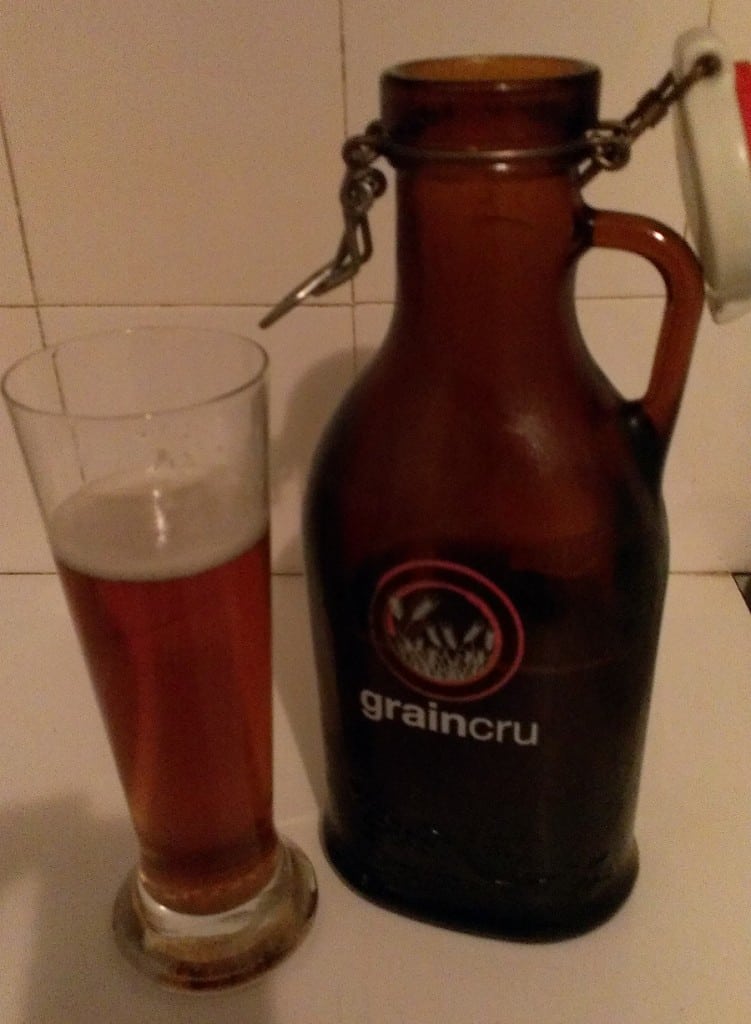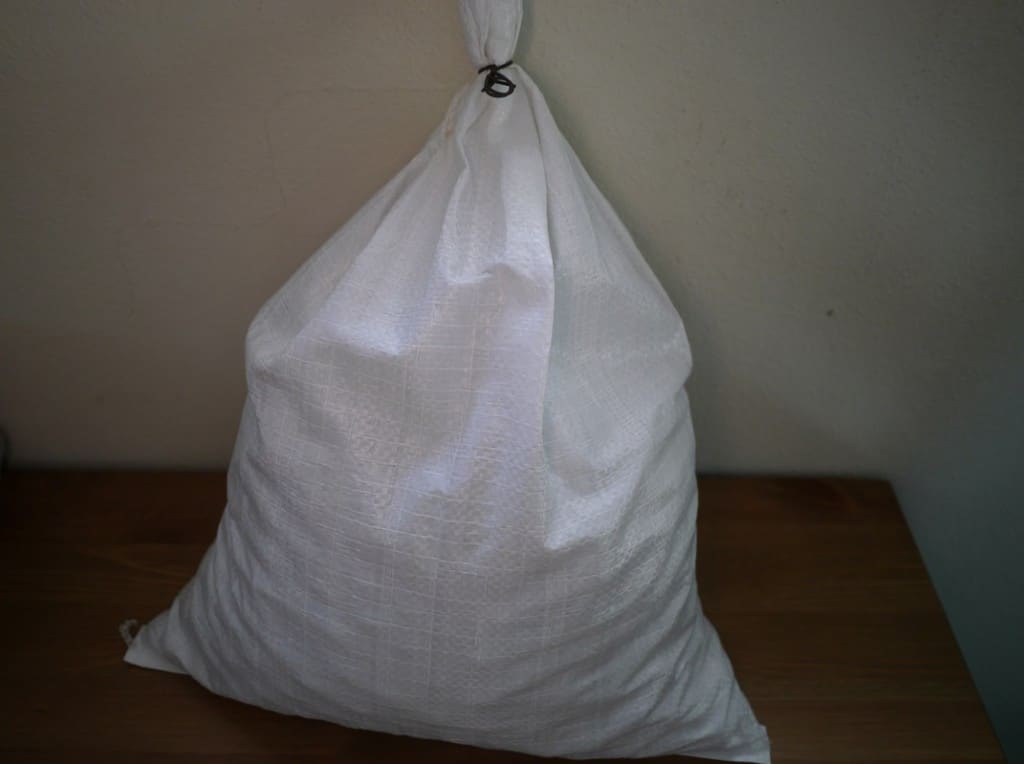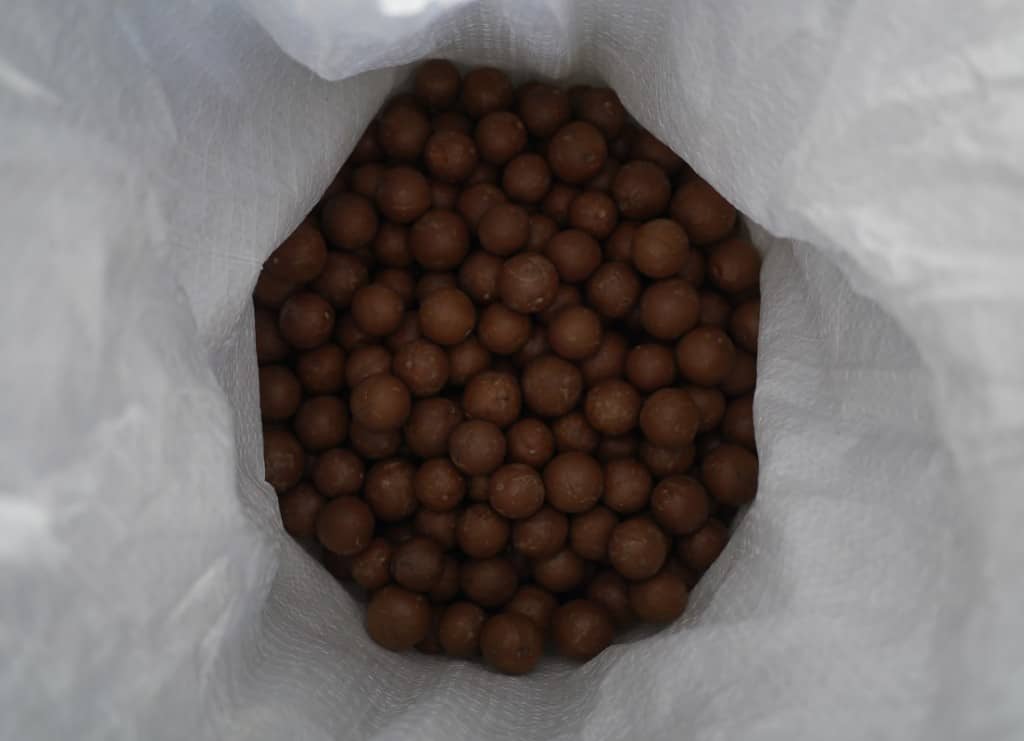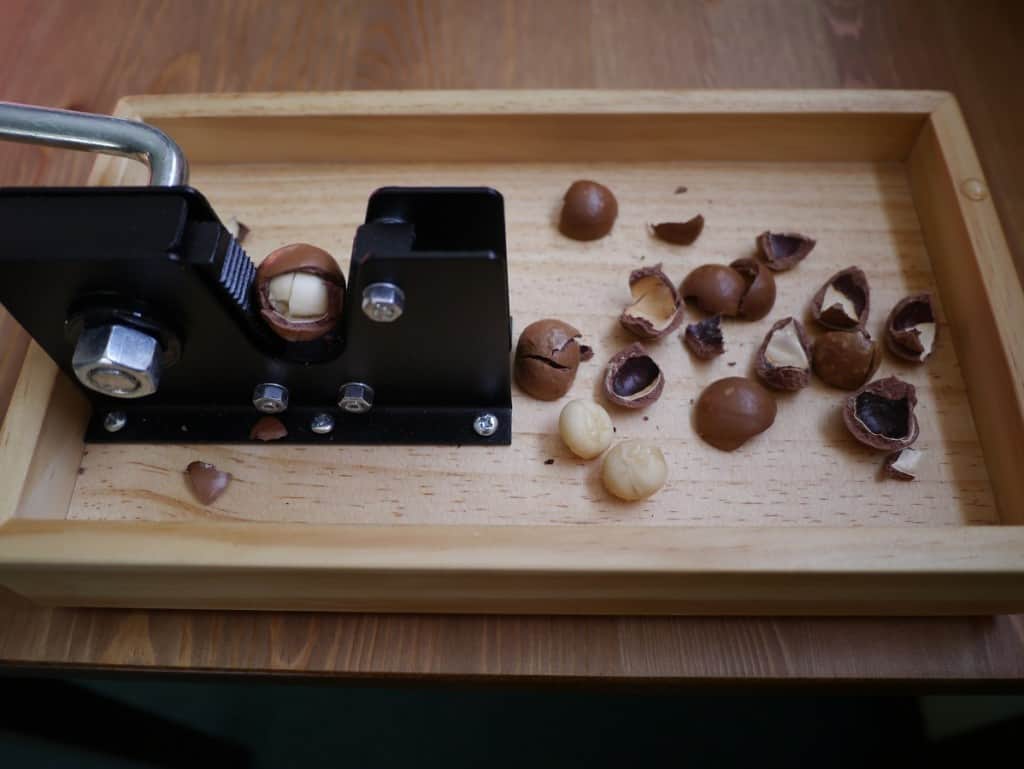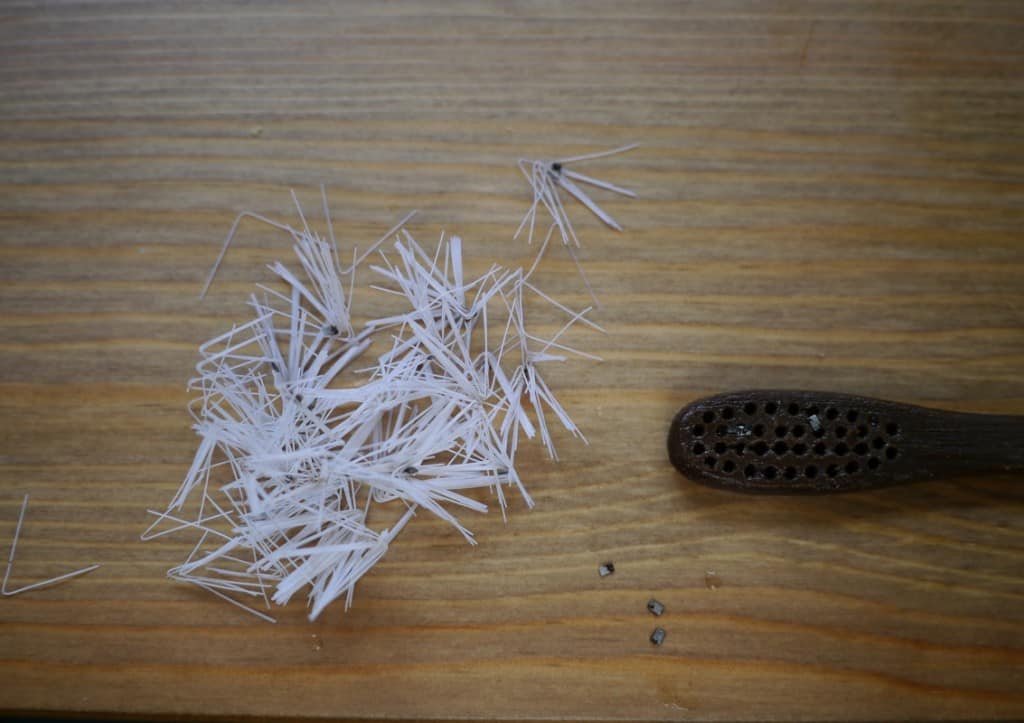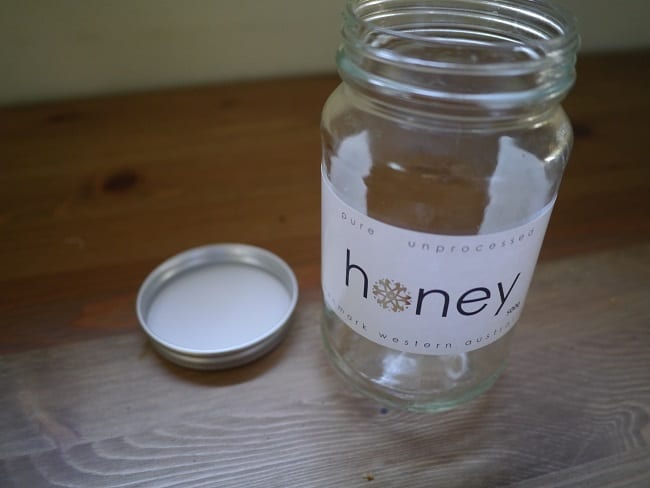Behind the Scenes: What ACTUALLY Happens to Recycling
I love a good tour of a recycling facility or a landfill site. Asking the question “where does our rubbish and recycling actually go?” is one thing, but to actually go and have a look? That’s a completely different experience.
Recycling is presented to us as a green, clean solution – but the truth is, it’s stinky, resource-intensive and run by markets. Meaning, if it’s not cost-effective to recycle, then it won’t be recycled. If no-one wants to buy the stuff that we’re collecting for recycling, then it won’t be recycled.
My first visit to a recycling centre (which has the technical name of Materials Recovery Facility, or MRF – pronounced “murf”) was back in 2012. I’d just taken part in Plastic Free July, and was working hard to reduce my plastic and choose glass, paper and cardboard instead.
That MRF visit changed my perspective on waste almost as much as Plastic Free July did.
Because it didn’t look like how recycling looks like in the brochures.
Because it was kinda stinky and gross, and there was so much of it.
Because the guy showing us around was hell-bent on telling us: if we can’t sell it for good money, we send it to landfill.
This was the recycling from just a few suburbs collected in a single afternoon.
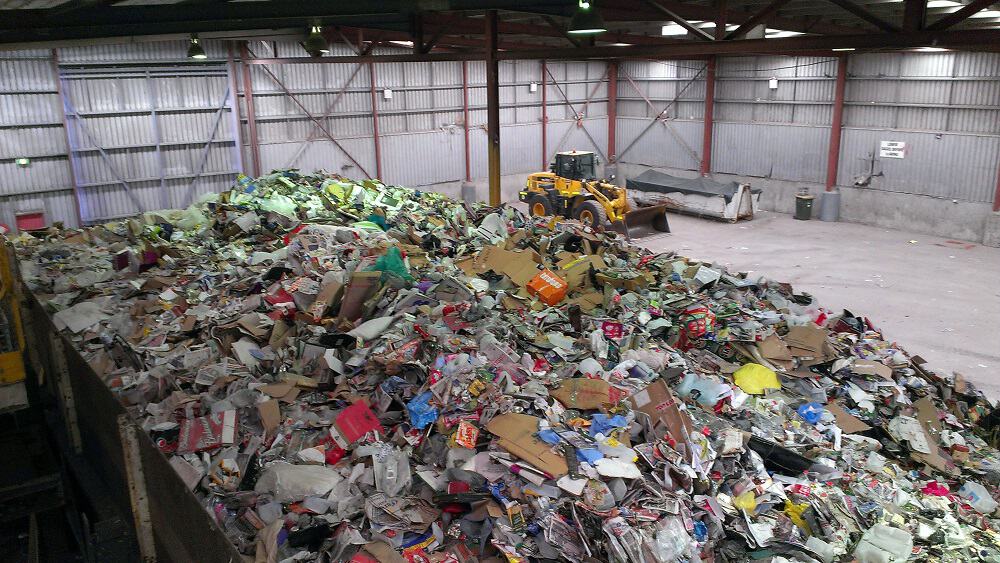
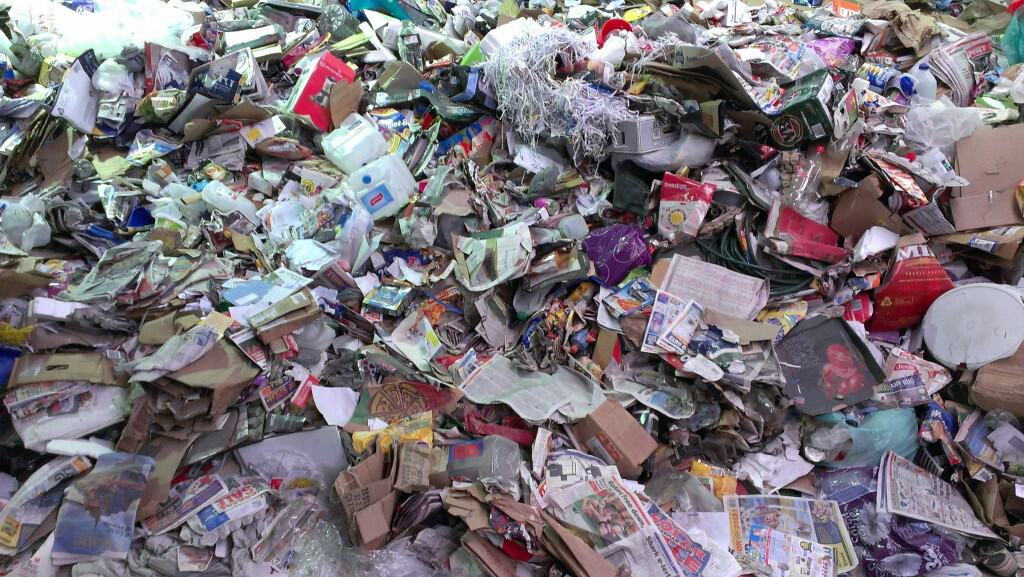
Visiting that MRF challenged my perceptions of recycling. It wasn’t green, or clean. It was a business, and it was running for profit. If landfill was a cheaper option than recycling, then the resources were landfilled. The ones that were recycled were baled into containers and shipped overseas for processing.
Everything went overseas for processing. None of that happened in Perth.
The biggest revelation for me was that glass is not recycled at all in Perth. Some MRFs sell glass to be crushed into road base (which I personally don’t consider to be recycling), but at this MRF, all glass was landfilled.
(Five years later and this is still true: glass is still not recycled in Perth, nor it seems, on the east coast of Australia.)
That visit to the MRF changed the way I viewed waste completely. There I was, choosing glass over plastic, only to find out that all that glass was heading to landfill.
That was not what I had expected.
That was my realisation that it wasn’t just plastic I needed to refuse, it was all packaging. I hadn’t heard of “zero waste” back then, but that visit was the start of my zero waste journey.
I’ve been pretty obsessed with waste ever since, and I’ve been to plenty of MRFs and other waste recovery places to find out exactly what goes on. I thought I’d share a few of these insights for those of you who can’t make it to one.
What Goes on at a Materials Recovery Facility (Recycling Centre)?
This is one of several recycling facilities in Perth. This facility services 5 councils. It cost $20 million to build.
The recycling is dumped on the floor by the recycling trucks, and from there is loaded onto a conveyor belt and the various recycling streams are sorted.
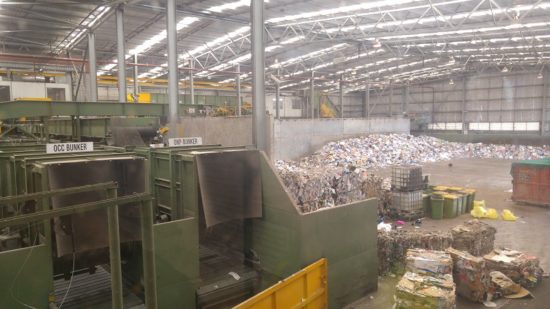
First the cardboard and paper is separated by spinning rollers into mixed paper, old corrugated cardboard and old newspaper (the three structures labelled in the picture below).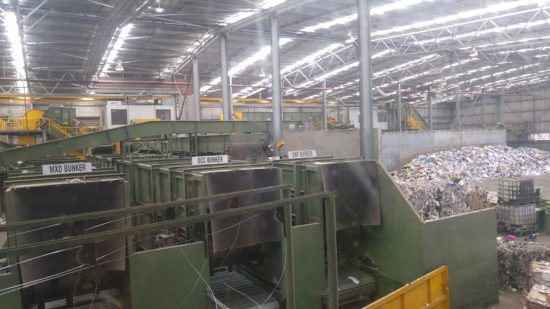
The glass is sorted by a tremel, crushed and used for road base. The steel is separated by a magnet, the plastic is sorted by an optical eye that can differentiate PET, HDPE and mixed plastic, and these are separated. An eddy current is used to separate the aluminium.
The resulting materials are baled and loaded into containers for shipping overseas: China, Malaysia or Indonesia. The recycling facility works on 3-month contracts with these purchasers.
What happens once these materials arrive overseas is a grey area. The companies have standards and agreements to adhere to for recycling and processing the waste, but there are also reports that most of the plastic is burned as a cheap alternative to fossil fuels.
What Happens with Commercial Composting?
Commercial composting can use various different “wastes” but for households, there are two main types of collection – those that use a dedicated food organics and garden organics bin (FOGO – they do love acronyms in the waste industry!) and those which compost the general landfill bin.
This facility composts the landfill bin. This means a much higher level of contamination.
Residents tend to put things in their landfill bin that they are told they cannot recycle. That makes sense, yes? But it means plastic, broken glass, pottery, broken electronics and all kinds of other stuff gets mingled in – and sent here for composting.
The first job is when the landfill waste arrives here is to remove as much of the big contaminants (bicycle wheels, gas bottles, large plastic items) from the waste. This is sorted with a big truck. Then it’s loaded into the composting machines, called digesters. They are 67m long, and there are 4 of them at this facility.
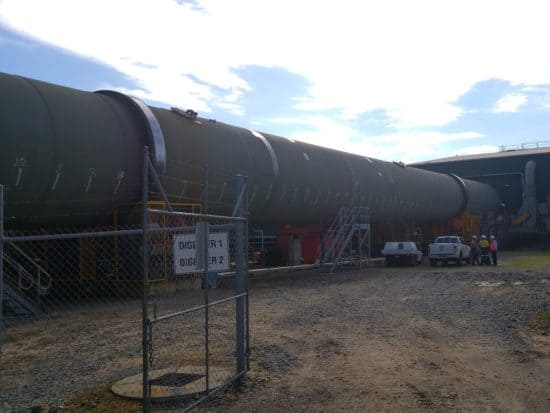
The “waste” is rotated in the digester for 3 days before being deposited in a large warehouse (the size of two soccer fields) to mature. It’s turned every few days by a machine, and cooled using giant fans to circulate air.
To prevent odours, the digesters have these enormous biofilters, made of tanks filled with water and wood chips. There are four of these: one for each digester. The air is sucked out with a vacuum filter. 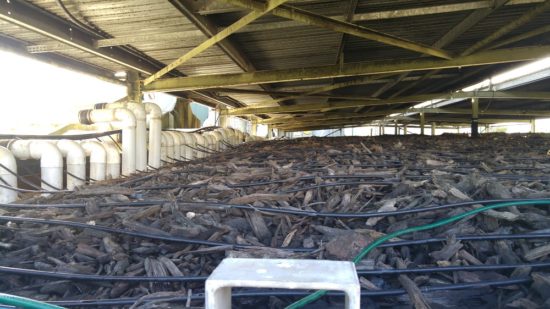
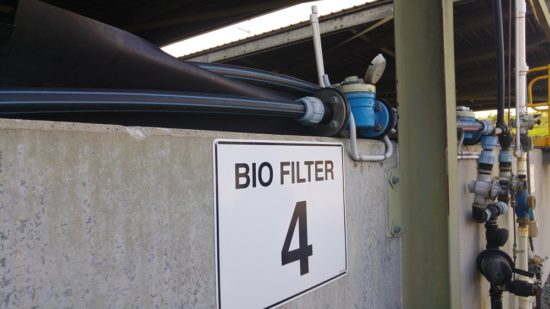
The compost is then sieved and screened to remove metal, plastic, glass and other pieces, and transported for further processing. Because it still has high levels of contaminants, it is only suitable for agricultural use.
Commercial composting facilities that accept dedicated food and garden organics bins have much lower levels of contamination and produce a higher grade compost.
Is This Typical? Is This What Happens to MY Recycling?
The truth is, every recycling facility is different. Some are much more high-tech than this, and some are much lower tech. Some use hand-pickers (real people who separate rubbish and pick out contaminants) and others rely solely on machinery.
Commercial composters are also different, and processes vary. Some councils don’t utilise these services at all, and simply landfill the contents of the landfill bin.
No two Materials Recovery Facilities are exactly the same. (Even where the machinery is the same, the contractors might be different, the ability to sell resources to markets is different, volumes will differ, and operating costs – meaning profitability -will be different.) If you are even the slightest bit interested in waste and where it goes, I recommend visiting your local one. Many (but not all) are open to the public. Contact your local council or waste contractor, and ask if they run tours.
Even if they don’t, there might still be an opportunity to have a look. Ask the question!
No Recycling Facility has 100% Recycling Rates
Recycling is always subject to contaminants, error and changes in the market. Someone putting the wrong thing in the wrong bin can contaminate a whole load (think asbestos and hazardous waste).
Markets change all the time. The value of plastic fluctuates with the price of oil. If oil prices are low, there’s less incentive for manufacturers to use recycled plastic as new plastic will be cheap. If oil prices are high, it’s more expensive to ship low-cost materials overseas for processing.
Councils often encourage us to put things into our recycling bins to get us into good habits. Or, they might prefer non-recycables to go to a recycling facility for sorting and removal, rather than putting them through a commercial composter (where they can do more damage). Or they think it is just too confusing to go into details, and we’ll get overwhelmed if they don’t make it really simple for us.
Acceptance of a material into a recycling bin is not a confirmation that the material will be recycled. It just means that it is the preferable option: to establish good habits, reduce contamination elsewhere, and give us faith in the recycling system.
Recycling Uses Huge Amounts of Energy
Recycling takes a huge amount of resources. Trucks need to collect those recycling bins from our streets, drive them to sorting facilities (and sometimes they get taken to a transfer station first, meaning two road trips) and then heavy machinery is required to sort the different streams. Then the materials need to be baled, loaded into containers and shipped to their final destination – which is often overseas.
Once overseas, there’s more processing and transportation.
Yes, recycling helps reduce new materials from being mined out of the ground. Yes, it uses less energy overall than making new things. Yes, it definitely keeps things out of landfill and keeps materials in circulation longer.
Recycling is definitely preferable to not recycling.
But recycling is not a perfect solution.
Recycling is not a get-out-of-jail-free card.
Refuse, rethink, reduce, reuse and repair – they all come before recycling.
Much as I’d love to live completely waste free, we don’t live in a circular economy. Many things are not designed for reuse. I still produce recycling – everyone does. I still receive letters in the mail, purchase the odd thing in paper or cardboard, buy wine in glass bottles on occasion, and find plastic packaging entering my home.
But I try to keep my recyclables to a minimum. If I can refuse something, then I will.
I pop those things I can’t (or choose not to) avoid in my recycling bin and I hope for the best.
Before I embarked on my zero waste lifestyle, I would see my full recycling bin as a badge of honour for being the responsible eco-citizen. Now I see anything that enters my recycling bin as a waste of resources, a failure of my imagination, a flaw in the system.
Most importantly, I see these things as something to work at improving for next time.
It is fantastic that recycling exists. It saves all those resources from landfill, and gives them the opportunity for reuse. We will always need recycling, but we mustn’t rely on it, or think of it as the solution.
Recycling is a great place to start. But it’s a terrible place to stop. We can do so much better.
[leadpages_leadbox leadbox_id=1429a0746639c5] [/leadpages_leadbox]

